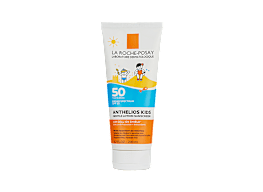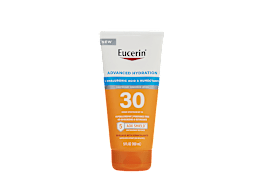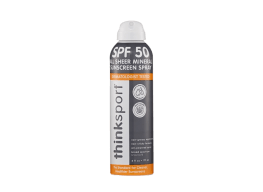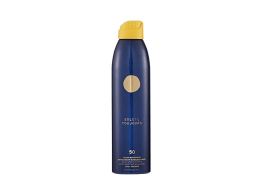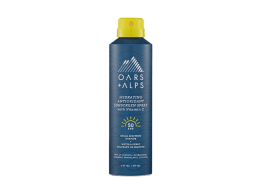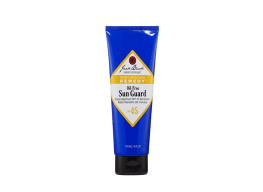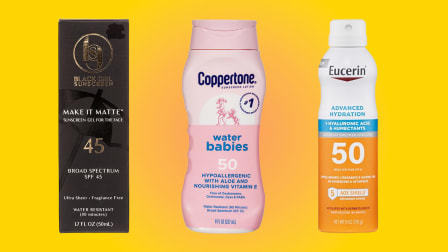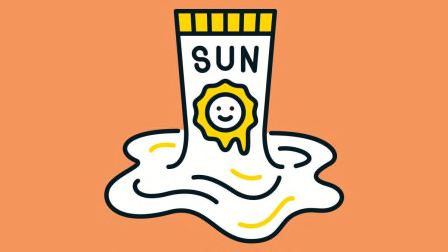Best Sunscreens of 2024
Our tests for UVA protection and SPF have found that sunscreens don’t always match the SPF number listed on the label
When you shop through retailer links on our site, we may earn affiliate commissions. 100% of the fees we collect are used to support our nonprofit mission. Learn more.

There’s an elixir that can keep your skin from looking old before its time and protect you against the most common type of cancer—it’s called sunscreen. And Consumer Reports testing has found that you don’t have to pay top dollar to find one that works. But we’ve discovered major differences even among products made by the same brands, and our tests have found that sometimes the protection offered by a sunscreen doesn’t match the SPF listed on the label.
Best Lotion Sunscreens
With lotions, use about a teaspoon per body part or area that’s not covered up with clothing: 1 teaspoon for your face, head, and neck; 1 for each arm; 1 for each leg; 1 for your chest and abdomen; and 1 for your back and the back of your neck. If you’re in a bathing suit, you’ll need about an ounce of lotion to cover your body. That’s about the amount that fills a shot glass.
Best Spray Sunscreens
Spraying the sunscreen into your hand and then applying it to your body helps ensure better coverage. But if you don’t do that, hold the nozzle close to your skin and spray until your skin glistens, then rub in the sunscreen. Do this even if a spray is labeled “no rub”; smoothing it into your skin increases its protection. Never spray your face, because you could get sunscreen in your eyes or inhale it. Instead, spray it into your hands and rub it onto your face.
Finding the Right Sunscreen for You
Any sunscreen is better than no sunscreen at all. But we have found crucial differences in performance in our tests. So top-notch protection is the first thing to think about when choosing a sunscreen. But there are other factors to consider.
Price
We include the price per container and the price per ounce so that you can weigh all the factors when you’re choosing a sunscreen.
Spray vs. Lotion
It’s easier to make sure you’re getting adequate coverage with a lotion than with a spray because you can see how much you’re using. And proper spray application isn’t always easy, especially when it’s windy. Oftentimes you end up protecting the air more than your skin.
There are also health risks to using sprays for some people. Inhaling the mist can cause lung irritation. And sprays can be flammable, so be sure to stay clear of any heat source—such as a grill—when using a spray.
Consumer Reports recommends using a lotion on kids rather than a spray, but if you choose to use a spray, be very careful when applying it. Children are more likely to inhale the mist, so the best thing to do is spray it into your hands and rub it onto your child’s skin. At the very least, have children close their eyes and mouth and turn their head while you spray.
Chemical vs. Mineral
All the sunscreens at the top of CR’s ratings contain chemical active ingredients, such as avobenzone. Some people may prefer to use a mineral (or natural) sunscreen, those with zinc oxide, titanium dioxide, or both. But in our tests over the years, mineral sunscreens haven’t performed as well. See “Best Mineral Sunscreens of 2024” for CR’s picks.
Scent and Feel
For many people, the way a sunscreen smells and feels on their skin is as important as the UV protection it provides. So in addition to our performance tests, our trained sensory panelists also evaluate sunscreens for scent and feel. Sensory testing isn’t factored into our Overall Score. What people prefer is subjective, so we can’t say, for instance, whether a sunscreen that has a tropical aroma is better than one with a classic beachy aroma. But our panelists objectively describe the scent and feel of every sunscreen we test so that you can pick the best product for you.
Environmental Concerns
A majority of the sunscreens in our ratings don’t contain oxybenzone or octinoxate. These two chemical active ingredients are highly effective UV filters, but they’re the ones that are most often flagged as being potentially harmful to coral reefs.
How CR Tests Sunscreens
In our tests, we have found big differences in performance, even among products from the same brand. In particular, sunscreens don’t always match the SPF (sun protection factor) number listed on the label. We test only broad-spectrum sunscreens that are labeled SPF 30—the minimum that dermatologists recommend you use—or above. Many of them still achieved at least an average SPF 30, but almost 40 percent of the products in our ratings averaged below SPF 15 in our tests.
CR uses a testing protocol that’s modeled on the one the Food and Drug Administration requires sunscreen manufacturers to use. But as is the case with other products we test that have government or industry standards, we use those standards as benchmarks and develop our own methodology to identify differences in performance and give consumers a comparative evaluation.
“We buy the sunscreens for our tests off the shelf, the way consumers would,” says Susan Booth, who oversees our sunscreen testing. “We use three samples, preferably with different lot numbers, of each product.” For SPF—a measure of how well a product protects against UVB rays—we test the sunscreens on fewer people than the FDA’s protocol calls for, and we test only after water immersion because if a product holds up on wet skin, it should hold up on dry skin. We also do a different test to determine UVA protection, which we think gives more helpful results.
To check SPF, a standard amount of each sunscreen is applied to a 2x3-inch rectangle on each panelist’s back. Then they soak in a tub of water for 40 or 80 minutes, depending on the product’s water-resistance claim. Afterward, smaller sections of that area are exposed to five to six intensities of UV light from a sun simulator for a set time based on how quickly the panelist’s skin burns without protection. (We also use a reference sunscreen with known performance to ensure the accuracy of the testing.) About a day later, a trained technician examines the areas for redness and determines the SPF.
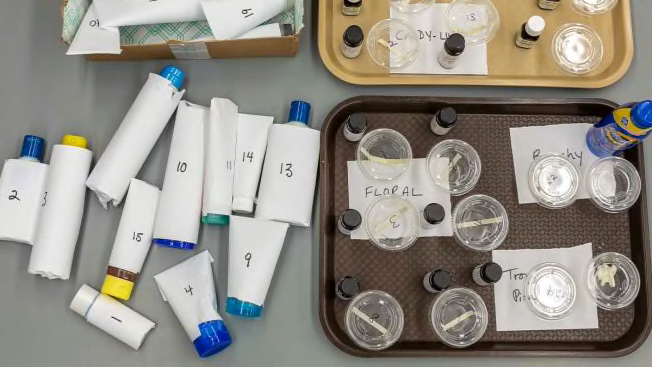
Photo: John Walsh/Consumer Reports Photo: John Walsh/Consumer Reports
In order for a sunscreen to be labeled broad-spectrum, the FDA requires that it protect against UVA and UVB rays. To test for UVA protection, we smear sunscreen on plastic plates, pass UV light through, and measure the amount of UVA and UVB rays that are absorbed. That information is used to calculate our UVA score.
This test is similar to the critical wavelength test the FDA requires sunscreen manufacturers to do in order to label their products broad-spectrum. But that is a pass/fail test, and just as you can pass a test with either an A or a D grade, some sunscreens do a much better job of defending against UVA than others. The test we use, similar to the one used in other countries, allows us to measure the degree of UVA protection a sunscreen provides.
Our ratings are developed from the average results of all the SPF and UVA tests on a particular sunscreen, as well as how much the average CR’s tested SPF varied from what’s on the label.
@consumerreports Sunscreen is a year-round product to use ☀️. We test them each year to help you make the best purchasing decision 😎. See ratings + reviews at cr.org/sunscreen #sunscreen #skincare #skintok ♬ original sound - Consumer Reports

















